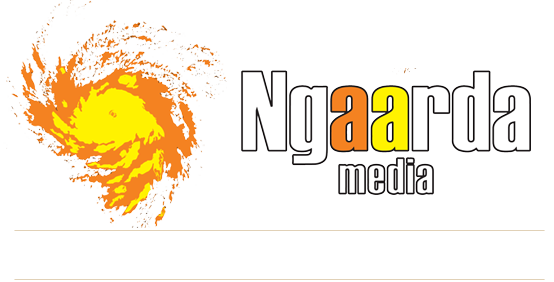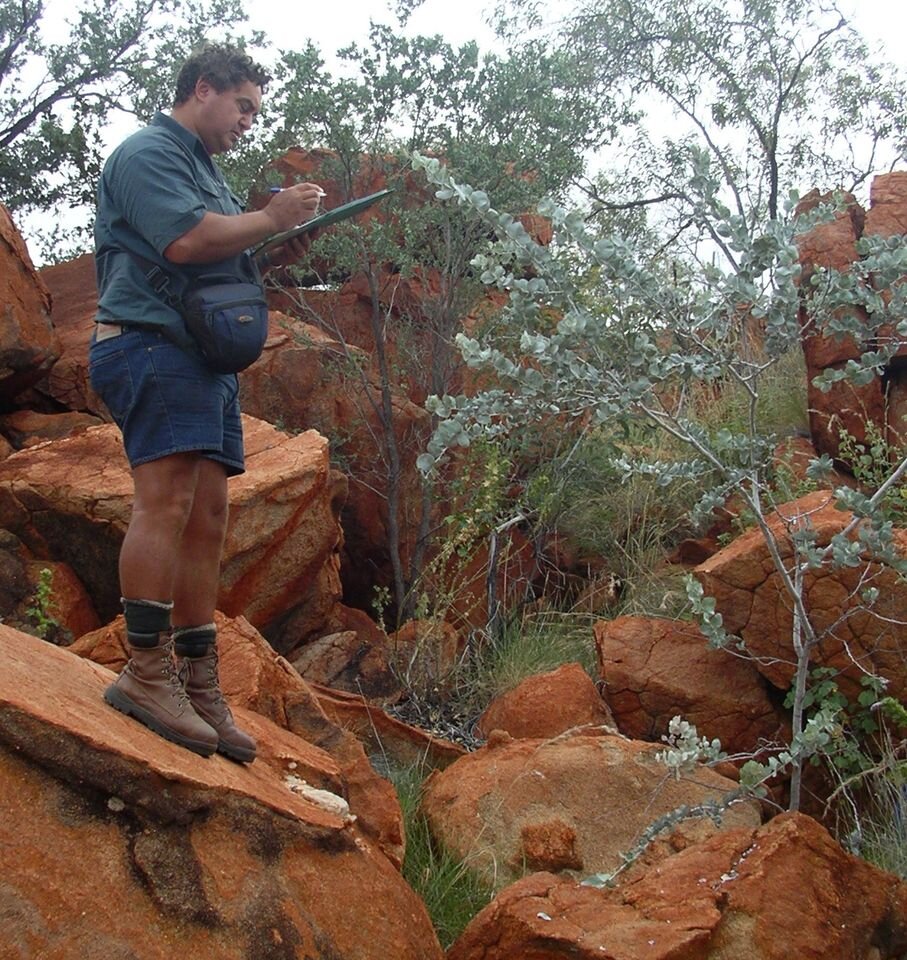HERE ARE THREE INDIGENOUS SCIENTISTS TO INSPIRE YOU THIS NATIONAL SCIENCE WEEK
To mark this week’s science week, we spoke to three Indigenous scientists, about how culture influences their work.
Conservation Biologist, Amos Smith, Astrophysicist Kirsten Banks, and Botanist Professor Stephen Van Lee Uwen are three Indigenous scientists making (seismic) waves!
Want to feel inspired this science week?
We spoke to three Indigenous scientists about how we can use Indigenous knowledge in tackling the tough issues Australia faces.
Amos Smith picutred far right with Gooniyandi rangers (Source: Amos Smith)
AMOS SMITH, Balanggarra, conservation biology student
Amos Smith is a 19-year old conservation biologist studying in his second year at the University of Western Australia.
Selected to take part in an internship to travel to Broome and work at Environs Kimberley, Smith said the experience inspired him to keep pursuing his studies in environmental science.
Smith says prescribed burning is an example of an Indigenous practice that is used in modern conservation efforts.
Prescribed burning is a process in which fire is applied to a predetermined area to lower fuel loads. The prescribed burning ensures the reduction of the intensity of bush fires.
He said prescribed burning is an important part of maintaining the environment.
“You’re doing these practices that have been done to maintain the environment for over 65 000 years, take that away, what’s happening is there is a build-up of fuel matter on the ground,
“So when you’re not practicing this during the late dry season or dry season, you’re having really high-intensity fires”.
Smith said we have to look back and learn from what has already been done.
“Learning from what we’ve done in the past is a really key factor in knowing what we need to do in the future”.
“Indigenous knowledge and culture can be used to change the world”.
For young people interested in being a scientist he said it is an important role for mob coming up now.
“For all us young people we will have to step up in the future… We will be the one’s dealing with the problems [of climate change]”.
Professor Stephen Van Leeuwen comprehensive work has led to a flower to be dedicated in his name, the “Leeuwen lily”, a delicate pink blossom that flowers one at a time. (Source:
STEPHEN VAN LEEUWEN, NOONGAR, BOTANICAL CONSERVATIONIST
Professor Stephen van Leeuwen is the head of the new Health Country Training center at Curtin Unversity.
The healing country training center hopes to start land generation using native plants, as well as act as a training ground for young Indigenous people who are interested in conservation.
Stephen van Leeuwen worked in the Pilbara researching plants in the bush, living in Karratha. He said he slept in his swag, collecting plants and recording down species found.
He said Indigenous people have the oldest engineers, craftsmen, and environmental scientists in the world.
“Our mob learned how to look after that country, and manage that country for over 60 000 years”
The new center aims to restore the country by bringing back native plants and animals and provide an economic return back into the community.
The project will be focusing on farmlands and degraded areas around town sites.
“What are the opportunities? There is a huge potential in terms of honey production. Western Australia has one of best quality honey in the world”.
He hopes to produce business cases that we can give to communities that people can take to organisations to allow people to produce off their country.
“People working in the country improves the well-being of the community,’
“Every dollar the commonwealth government puts towards ranger programs, that is $3.50 that government doesn’t have to spend on health and welfare”.
He encourages young people interested in science and the environment to get work experience.
“If young people want to take that opportunity to talk to rangers in the national park and let them know you’d like to do work experience”.
KIRSTEN BANKS, Wiradjuri, astrophysicist
Banks posts Tik Tok’s on Indigenous science. (Source: NITV)
Kirsten Banks is a Wiradjuri Astrophysicist and passionate science communicator. She teaches on a number of different platforms including live-on-stage, broadcasting on NITV, and her own personal Tik Tok profile @AstroKirsten where she talks about the Indigenous link to science.
Her interest in science started with the weather, but it wasn’t until she was taken on a school excursion to see a documentary about the Hubble telescope that space captured her imagination.
On her Tiktok, Banks makes educational shorts about Indigenous Australia’s link to science. She tells us that the knowledge we have in Australia.
“The knowledge we have here in this country is incredible, there are hundreds of different [Indigneous] groups across Australia that have their perspective on the night sky”.
Banks says her favorite constellation in her Wiradjuri heritage is Gugurmin, the emu in the sky.
“With gugurmin you can use its position in the sky to indicate when it’s the best time to go out and find emu eggs, so it’s not just a pretty thing to look at”.



